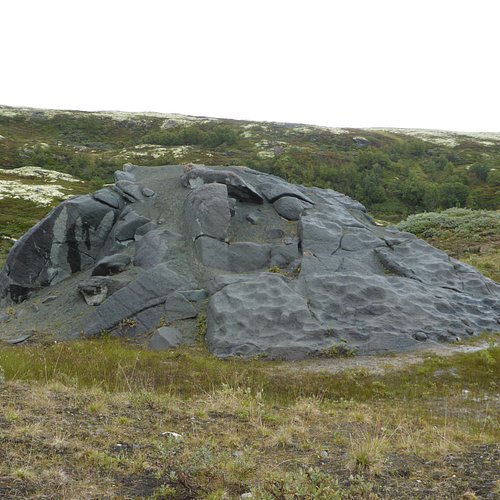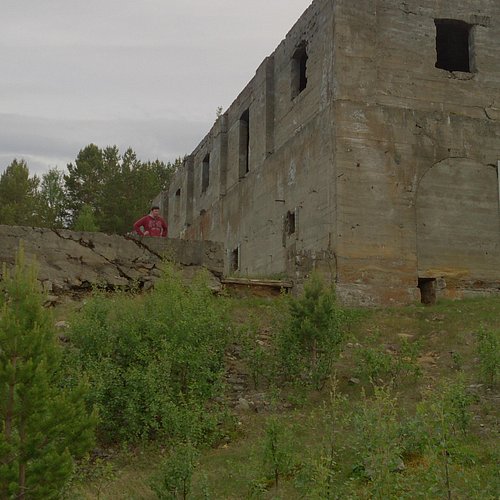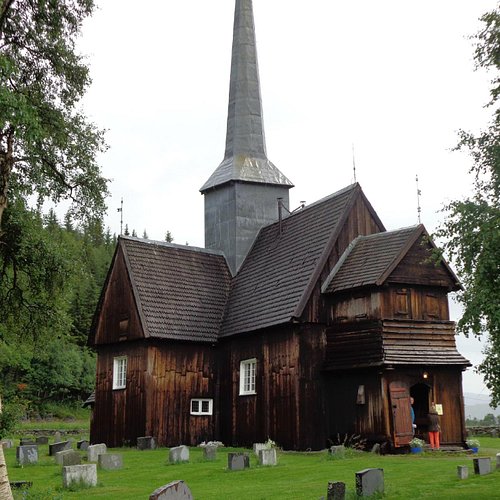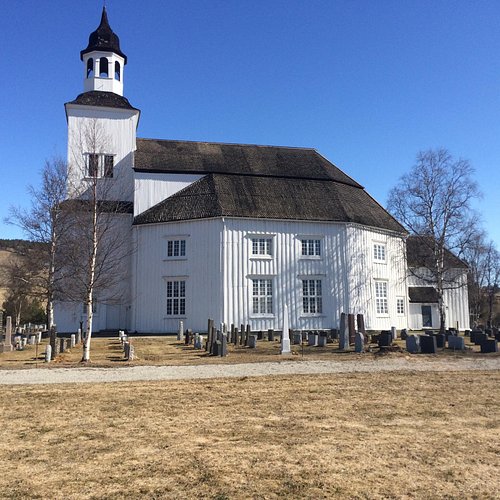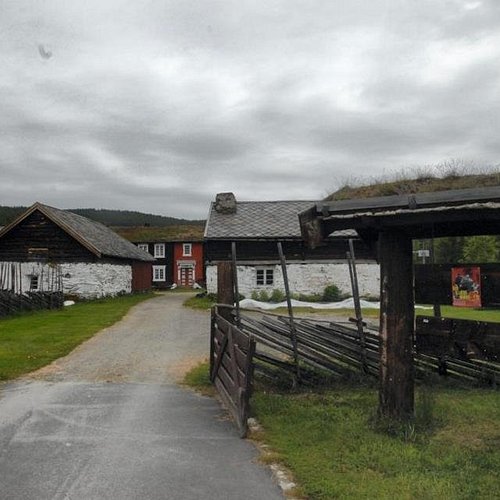Things to do in Tynset, Eastern Norway: The Best Sights & Landmarks
Tynset is a municipality in Hedmark county, Norway. It is part of the traditional region of Østerdalen. The administrative centre of the municipality is the village of Tynset.
Restaurants in Tynset
1. Brydalen Church
Overall Ratings
5.0 based on 2 reviews
The chapel in Brydalen was consecrated in 1884. Previously, the school had been used for reading the scriptures. A grave yard for the people living in Brydalen was established in 1871. To build a church was quite a feat for the 20 people living in this small village. There was very little money. However there was a tremendous work effort among them. Ole Buhaugen from Tynset was the builder while Kluver, from Denmark was responsible for the paintwork. An organ was also acquired. Throughout the years, the church has been rebuilt and restored several times. Perhaps most of all, the chapel shows a tremendous spirit of self-sacrifice in a small community which gives visitors something to think about! For a guided tour, contact Inger Lise Naess, telephone: 95233624.
2. The Soap Stone Quarry
Overall Ratings
5.0 based on 2 reviews
Bubakk, Kvikneskogen About 1000 metres above sea-level, just west of Sandbekkdalen in Kvikne in Tynset, lies one of the country’s most known soap stone quarries from the pre-roman Iron Age. The stone quarry is known first and foremost through some remarkable dating. Several C-14 samples of organic material in the waste mass taken out beside the quarry are dated to 400-300 years BC. It is assumed that 3000-4000 pieces of raw material for pots were taken out of the quarry. During excavations in 1969, quite a few wooden objects such as spades, plates and a cup were unearthed. Soap stone from the quarry has been used in the restoration work on the cathedral in Trondheim. Marks made due to drilling are clearly visible. Just to wander in this area and touch the marks where the raw materials for pots were removed for 2500 years ago. To think about all the activity so long ago, certainly awakes your imagination and gives you a feeling of the historical atmosphere. There are notice boards on the main road (Rv30) and in the quarry which give plenty of information. There is a toll road into the quarry but it is recommended to walk.
3. Kvikne Copper Mine
Overall Ratings
5.0 based on 1 reviews
The remains of the copper mine are 8-9 km east of Yset in Kvikne. The road is only open in summer time. The first ore was found here in 1629. As opposed to other copper mines of any importance there was very little activity here after 1800. This area is of great value as a historical document of the oldest mining period in the country. The mining area forms a landscape with partly weathered yellow ore heaps and mining caves which give this area very distinctive features. The buildings which were connected to the daily running of the mine are now owned privately. There are the remains of several houses and the wheel house. Here you will find the remains of water channels and dams connected to the water-driven equipment used by the mine in 1700. As a result of flooding and landslides in this old mine, there are few of the mine’s great galleries that are preserved. However, there are some smaller galleries and drifts that are preserved and safe enough to be viewed.
4. Rostvangen Mines
Overall Ratings
5.0 based on 1 reviews
At Rostvangen you will find the remains of the mining community which existed for 17 years from 1904 until 1921 and resulted in the biggest bankruptcy in Norway’s history at that time. At the most populous period there were approx. 500 people living in the mining community. There was a school, a shop, a café, a community hall and a bakery and other things needed in a small community. There was a theatre group, a brass band, a football club and dances which provided social activities. A hydro-electric power station was built to provide power for the mines. The remains of the dam and the turbine hall still lie along the main road (Rv 3) just south of Kvikne. Today, just the foundations of the buildings remain. Notice boards have been put up with both text and photographs which give visitors a good insight into life at Rostvangen. How to get there. Take off the main road (Rv3) at Nytroa and follow the signs along the 3 km toll road to the parking area. From here there is a clear path leading up to the mining area.
5. The Church at Kvikne
Overall Ratings
4.5 based on 6 reviews
If you are interested to see one of the finest altarpieces in the country and a church richly decorated, then you must visit the church at Kvikne. This cross-shaped church was built between 1652-1654 and it was restored between 1738-1739. The present church was probably built on the same site as the previous stave church. The stave church was too small in the period of prosperity of the copper mine, which prevented people moving away and made farming more profitable. The copper mining company donated timber to the church while local people did most of the building work. Jorgen Snekker is believed to have made the pulpit, while the altarpiece was probably made by Johan Bildsnider from Trondheim. The large painting on the alter is believed to have been painted by Johan Kontrafeier. The church is open for guided tours in July.
6. Tynset Church
Overall Ratings
4.0 based on 6 reviews
When the famous Norwegian writer, Bjornstjerne Bjornson drove through Tynset, he heard the bells ringing from the church tower and this inspired him to write one of his most well-known psalms. Few churches have such a beautiful situation as the church at Tynset which can be viewed from all sides. The view from the hill on which the church is situated is excellent and certainly worth a visit. The road leading up to the church is called Vedalen. The name indicates that this has been place of heathen worship and rituals a long time ago. The church was consecrated in 1795, just three years after previous church burnt down. The first churches in Tynset were situated further up the slope, above the present day church. Here the first church that we know about was consecrated in1211. Today, there is a memorial stone placed on the site of this church.
7. The World’s Largest Kick Sled
Overall Ratings
4.0 based on 30 reviews
This must be the most photographed motive in Tynset. Every day, there are travellers and tourists visiting the centre of Tynset to take a photograph of the world’s largest kick sled. Children of all ages, climb up to be photographed while they stand, sit or hang on the sled. It is 5.25 metres high, 3.72 metres wide and 11.6 metres long. This makes it five times larger than a normal kick sled. The factory NORAX which produces kick sleds is situated in Tynset – making Tynset the country’s main kick sled producer. If you come to Tynset in the winter-time, you may notice that only half the pavements are gritted so that the other half can be used by kick sleds. The idea to build a huge kick sled was the result of a television programme in 1994. Tynset arranged a day to mark the unveiling of the world’s largest kick sled. Later a group in Sandefjord built an even larger kick sled, but Tynset regained its world title again in 2011.
8. The Lovise Hut
Overall Ratings
3.0 based on 1 reviews
The Lovise Hut was built in 1748 as a smelter hut for the Folldal Works. The foundations of the smelter hut, water chute, materials storehouse, cottage etc., are clearly visible and the slag heaps dominate the landscape. 500 m path from Solndammen to the Lovise Hut. THe pot holes in the river Solna are clearly visible from the path.
9. Dolmotunet
A working farm museum with pigs, goats, kids, chickens, horses and calves.
10. Vollan Farm
The farm at Vollan, has never been a farm typical of Kvikne and that is what makes it so interesting and exciting. The best way for you to get there, is to stop along the main road to Trondheim (Rv3) in the lay-by. Then walk across the newly-built bridge which is a copy of the original bridge, over the river Orkla and this takes you straight to the farm. The history of the farm at Vollan can be traced back to the start of the mining in Kvikne during the 1600’s. The farm has been used among other things as a vicarage, and at its peak the farming land stretched about 20 km. around the farm. It is the farm chapel at Vollan that makes it so special and it is one of the few farms in Norway with its own chapel. In 1969, Tynset Municipality bought the farm and it has carried out a great deal of restoration work there. Today the farm is a museum focusing on local history. Kvikne National Park Centre is situated in what used to be the cowshed. Here you will find information and exhibitions connected to the national parks and protected areas on both sides of the valley.


